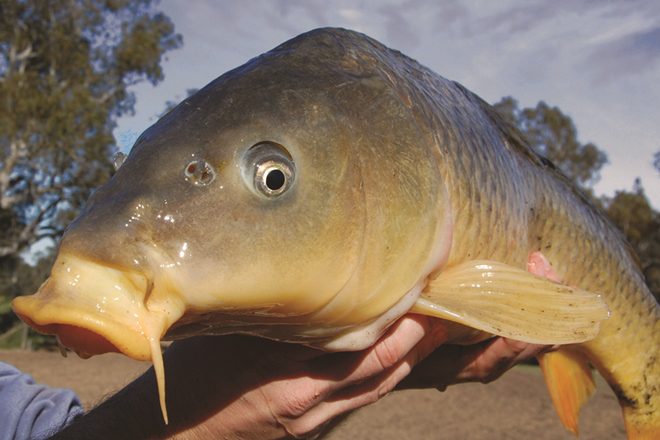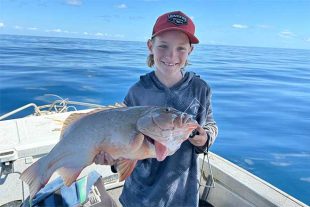A SUBSTANTIAL investment has been made under Australia’s National Carp Control Plan (NCCP) to explore the viability of using the carp virus, Cyprinid herpesvirus 3, to control the pest species, carp, in Australia’s waterways, and ultimately improve water quality and ecosystem health.
A comprehensive research program is central to this approach under the Australian Government’s $15 million National Carp Control Plan, to address remaining knowledge gaps and understand key risks and opportunities. The University of Adelaide is leading two pieces of research looking at key aspects of water quality. One project will assess risk of anoxia – no oxygen – in rivers, wetlands and floodplain habitats following carp mortalities, while the other will investigate risk of harmful bluegreen algal blooms caused by carp mortality events, and how best to avoid them.
“We acknowledge that low oxygen levels – something that already occurs from time to time in some Australian waterways – and algal blooms are a concern for stakeholders so both of these research projects are vitally important,” says NCCP National Coordinator Matt Barwick.
Principal Researcher Professor Justin Brookes, Director of the Water Research Centre at the University of Adelaide, says “we know oxygen is very dynamic in aquatic ecosystems and some areas and habitat types already experience low oxygen levels from time to time, because oxygen can change with things like wind flow, velocity and high dissolved organic carbon”. “Under the anoxia research project we are combining field-based experiments with hydrodynamic-biogeochemical modelling to help us understand how carp density and flow might alter the risk of hypoxia (low oxygen) or anoxia,” says Prof Brookes.
Meanwhile, the related project looking at risk of bluegreen algae blooms aims to determine how mortality of carp following the potential carp virus release may affect nutrient concentrations, and therefore risk of bluegreen algal growth. “We are aiming to predict the impact of carp mortality on key aspects of water quality in wetlands, rivers and floodplain habitats and whether strategies including water flow management can mitigate the risk,” says Prof Brookes. “We appreciate that tackling the carp problem on a continental scale is complex, but these research projects, along with the other eight research projects already under way, will ensure we have the evidence to determine the best way forward to help promote recovery of Australia’s waterways and aquatic biodiversity”, says Mr Barwick.
Some of the other major projects forming part of the NCCP research program include: a biomass study to estimate carp density in Australian waterways; completion of trials to confirm that only carp are affected; developing strategies for cleaning up carp waste if the virus is released; and a quantitative economic and ecological risk assessment of carp biocontrol.
“The NCCP is a robust planning process. We are committed to undertaking the extensive research needed to make an informed recommendation to government at the end of 2018 on the most appropriate methods to control carp. At the end of the day, this national program aims to identify how best to reduce carp numbers in order to return our waterways back to healthy and vibrant ecosystems,” says Mr Barwick. In addition to research, a comprehensive stakeholder engagement plan will be undertaken over the next 18 months to consult with, and seek feedback from, the general public and special interest groups.
To be kept up to date on the NCCP please visit www.carp.gov.au and sign up to the newsletter or visit the contact us page to leave feedback.
About the National Carp Control Plan
The National Carp Control Plan (NCCP) is being prepared to explore the release of the carp virus Cyprinid herpesvirus 3. The Fisheries Research and Development Corporation (FRDC) is leading the $15 million planning process on behalf of the Australian Government. At the end of 2018, the FRDC will provide the completed NCCP to the Australian Government, which will then decide whether to release the virus or not.
For more information visit www.carp.gov.au
 Bush ‘n Beach Fishing Magazine Location reports & tips for fishing, boating, camping, kayaking, 4WDing in Queensland and Northern NSW
Bush ‘n Beach Fishing Magazine Location reports & tips for fishing, boating, camping, kayaking, 4WDing in Queensland and Northern NSW









